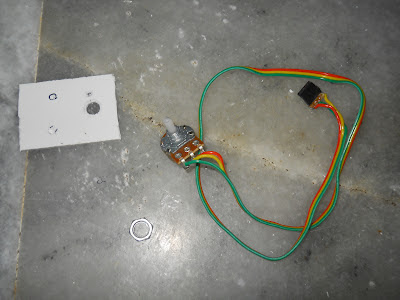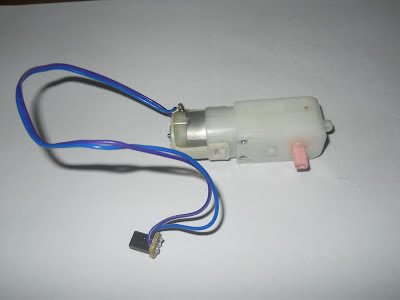Every newbie of electronics must be aver of some fundamental.Knowing the "resistor" is one of that.
the question is"what is resistor ?what is getting resisted?
Every one knows that "current" is nothing but flow of electrons just like water flow through a pipe.
here pipe means any conducting wire.The operation of pump is similar to that of a battery.Tap is nothing but a switch in the circuit
look at the following image
In this formula, length and area are geometric properties of the cylinder; the ratio L/A has dimensions of reciprocal length. The Greek symbol "rho" above stands for resistivity, a property of the material making up the cylinder, usually reported in ohm-cm. The separation of the dependence of a physical quantity into geometric and material parts is typical.
we cannot use a resistor of more length in our circuits so we use resistors of different materials are available in several sizes.
how to find the resistance of a resistor?
the ordinary resistor we use in the laboratory consist of a color coding on it.depending upon the color band pattern printed on it we can find the resistance.look at the figure below
consider the following example:
above resistor is of 4-band color type.so the resistance calculation will be as follows
yellow violet red gold
4 7 10^2 +-5%
R= 4700 ohm = 4.7 K ohm
the question is"what is resistor ?what is getting resisted?
Every one knows that "current" is nothing but flow of electrons just like water flow through a pipe.
here pipe means any conducting wire.The operation of pump is similar to that of a battery.Tap is nothing but a switch in the circuit
look at the following image
measure of resistance:
In the water pipeline the narrow neck opposes the water flow.Similarly the resistor opposes the flow of current in the conducting wire.
The resistance(R) of a material will be proportional to it's length(L)
and inversely proportional to it's cross sectional area(A).
Considering the constant of proportionality (p) called resistivity.
we cannot use a resistor of more length in our circuits so we use resistors of different materials are available in several sizes.
the ordinary resistor we use in the laboratory consist of a color coding on it.depending upon the color band pattern printed on it we can find the resistance.look at the figure below
consider the following example:
above resistor is of 4-band color type.so the resistance calculation will be as follows
yellow violet red gold
4 7 10^2 +-5%
R= 4700 ohm = 4.7 K ohm




























































